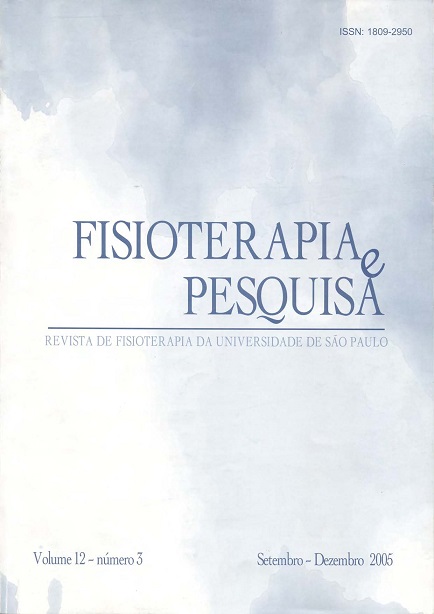Mobilization by the maitland method to correct lower limb length discrepancy: a case study
DOI:
https://doi.org/10.1590/fpusp.v12i3.76716Keywords:
physical therapy techniques/methods, lower extremity, rehabilitation.Abstract
This study evaluated the immediate effect of articular mobilization by the Maitland method in a patient (58 years old) with discrepancy of lower extremity length (LLD) due to sequels of a car accident. The patient, with shorter right leg, was evaluated in one session presenting a 3 cm difference between real and apparent lower limb measures, a 1 cm difference in legs length and a 7,5 cm right calcaneumto-ground distance. In the same and sole session, the patient was treated by articular mobilization using the Maitland method, a procedure mainly used to increase mobility of the muscular-skeletal system that may favour posture alteration. Two techniques were used - posterior pelvis rotation and anterior pelvis rotation - during 1 minute each, being the procedures repeated three times, thus totalling 6 minutes. The distance right calcaneum-to-ground was remeasured previously to each procedure. Afterthe two first minutes, a decrease of 3 cm was noticed in the right calcaneum-ground distance. After the second and third procedures there was no alteration, previous gain being kept. Results show that the used techniques of the Maitland method were effective in reducing LLD.
Downloads
Download data is not yet available.
Downloads
Published
2005-12-31
Issue
Section
Case Report
How to Cite
Mobilization by the maitland method to correct lower limb length discrepancy: a case study. (2005). Fisioterapia E Pesquisa, 12(3), 41-45. https://doi.org/10.1590/fpusp.v12i3.76716



